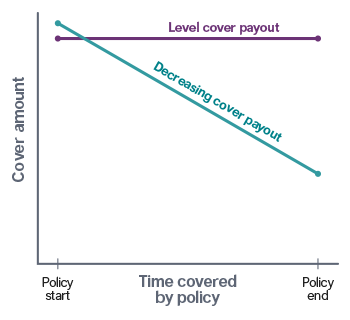Explore affordable term insurance for women in the UAE. Learn about benefits, best plans, eligibility, and how to choose the right coverage to protect your family.
Is It Wise to Purchase a Term Plan with Maturity Benefits?
In the ever-evolving insurance landscape, numerous diversified product offerings, tailored to suit the requirements of consumers, have emerged. One such innovation is the term plan with maturity benefits. While traditional term plans typically provide a death benefit without any maturity payout, new plans are increasingly offering maturity benefits.
Table of Content
However, this may also lead to this question: Is it wise to purchase term insurance with maturity benefits?
Term Insurance with Maturity Benefit
To begin with, let's demystify what a term plan with maturity benefits means.
At its foundation, term insurance is a straightforward life protection product. The policyholder pays a premium for coverage over a specified term — if the said person passes away during that term, their beneficiaries will receive a death benefit.
If the policyholder outlives the policy, traditionally, there was no payout — it was a pure protection plan. This has changed with the introduction of term insurance plans with maturity benefits.
Such insurance plans are often termed ‘TROP’, which stands for term insurance plans with a return of premium.
Here’s a deeper dive into what this means and how it differs from conventional term insurance:
- What is TROP?: TROP is a type of term insurance plan. If the policyholder survives the term of the policy, the premiums paid during the policy tenure are returned. In essence, it combines the aspects of protection and savings. You get the security of a term plan and the assurance that your premiums will be returned to you if you outlive the policy term.
- Duration of Maturity Benefits: Generally, term insurance plans with maturity benefits are offered for fixed periods like 5, 10, 15, or 20 years. It’s essential to choose a duration that aligns with your financial planning. For instance, if you're looking for short-term coverage with an option to reclaim premiums, a 5-year plan might be suitable. On the other hand, if you're thinking of long-term protection and savings, the 15 or 20-year plans might be more appropriate.
- Not Purely a Protection Plan: Traditional term insurance is designed solely to provide financial protection to the beneficiaries in the unfortunate event of the policyholder's death. With TROP, the lines are blurred between protection and savings. The return of premium feature ensures that the policyholder receives a sum at the end of the term, making it partially a savings instrument.
- Why TROP Exists: The introduction of TROP was primarily to address a common sentiment among potential insurance buyers – the idea of 'losing' money if they outlive their term policy. TROP gives policyholders the satisfaction of getting something back, turning their term insurance into a form of savings.
Advantages of Term Insurance with Maturity Benefits
Mentioned below are some of the key advantages of term plans with maturity benefits -
- Return on Investment: Unlike a traditional term plan where premiums are 'lost' if one outlives the policy, a term insurance with maturity benefits ensures that the policyholder gets back a portion or the entirety of the premiums paid. This is seen as a forced saving mechanism.
- Peace of Mind: For many, the thought of not getting anything in return after diligently paying premiums can be unsettling. This plan offers peace of mind that you will get a sum back at the end of the term.
- Flexibility: Some insurance companies provide flexible policy terms, allowing policyholders to choose the return of premium option at an additional cost.
- Potential for Add-ons or Riders: Some term insurance plans with maturity benefits also offer riders or add-ons such as critical illness coverage. This provides a more comprehensive protection package, ensuring that policyholders not only get life cover but also financial protection against other unforeseen life events, adding more value to their policy.
- Structured Financial Discipline: By committing to a term plan with maturity benefits, policyholders instil a disciplined approach to savings. The periodic premiums act as a consistent saving habit, which can be particularly beneficial for those who might not be disciplined in setting aside savings regularly.
Drawbacks of Term Insurance with Maturity Benefits
Some of the disadvantages of term insurance with maturity benefits are as follows -
- Higher Premiums: A life insurance policy with maturity benefits comes at a cost. Policyholders pay a higher premium compared to standard term insurance policies. This premium may sometimes be comparable to other insurance-cum-investment products that may offer potentially higher returns.
- Not Purely an Insurance Product: The very essence of term insurance is to provide financial security to loved ones in the event of sudden death. With the introduction of maturity benefits, it blurs the line between pure protection and investment.
- Alternative Investment Options: The return on term insurance with maturity benefits might not be as high as what one could potentially earn by investing the premium difference (between a regular term plan and a term plan with maturity benefits) in other financial instruments like mutual funds, stocks, or bonds.
Points to Ponder Before Making a Decision
Check for the following points before getting a term insurance plan that offers maturity benefits -
- Purpose of Insurance: Ask yourself why you're buying the insurance in the first place. If it's purely for protection, a traditional term insurance might suffice. Even if you're looking at a return on investment, you can explore other avenues as well.
- Affordability: Since the premiums are higher for term insurance with maturity benefits, make sure that you can afford the plan in the long run without straining your financial resources.
- Compare Returns: Before jumping in, it’s essential to compare the potential returns of a term plan with maturity benefit with other investment avenues. You should lead with this question — Which one offers better value for money in the long run?
- Read the Fine Print: Not all term insurance with maturity benefits are the same. The exact terms, conditions, and exclusions can vary between insurers. It's vital to thoroughly understand what you're signing up for.
One Size Doesn’t Fit All
The allure of getting back money at the end of a term policy is undeniable. Term insurance with maturity benefits certainly tries to bridge the gap between protection and savings. However, it’s essential to weigh the pros and cons against your financial goals and needs.
For some, the promise of a maturity benefit can offer peace of mind. On the other hand, for others, the higher premium may not justify the returns, especially when there are other investment options available in the market.
It’s wise to consult with a financial advisor and assess the value a term insurance with maturity benefits offers in the context of your broader financial requirements and planning.
Policybazaar Insurance UAE – Helping you navigate the wilderness of the insurance world!




























